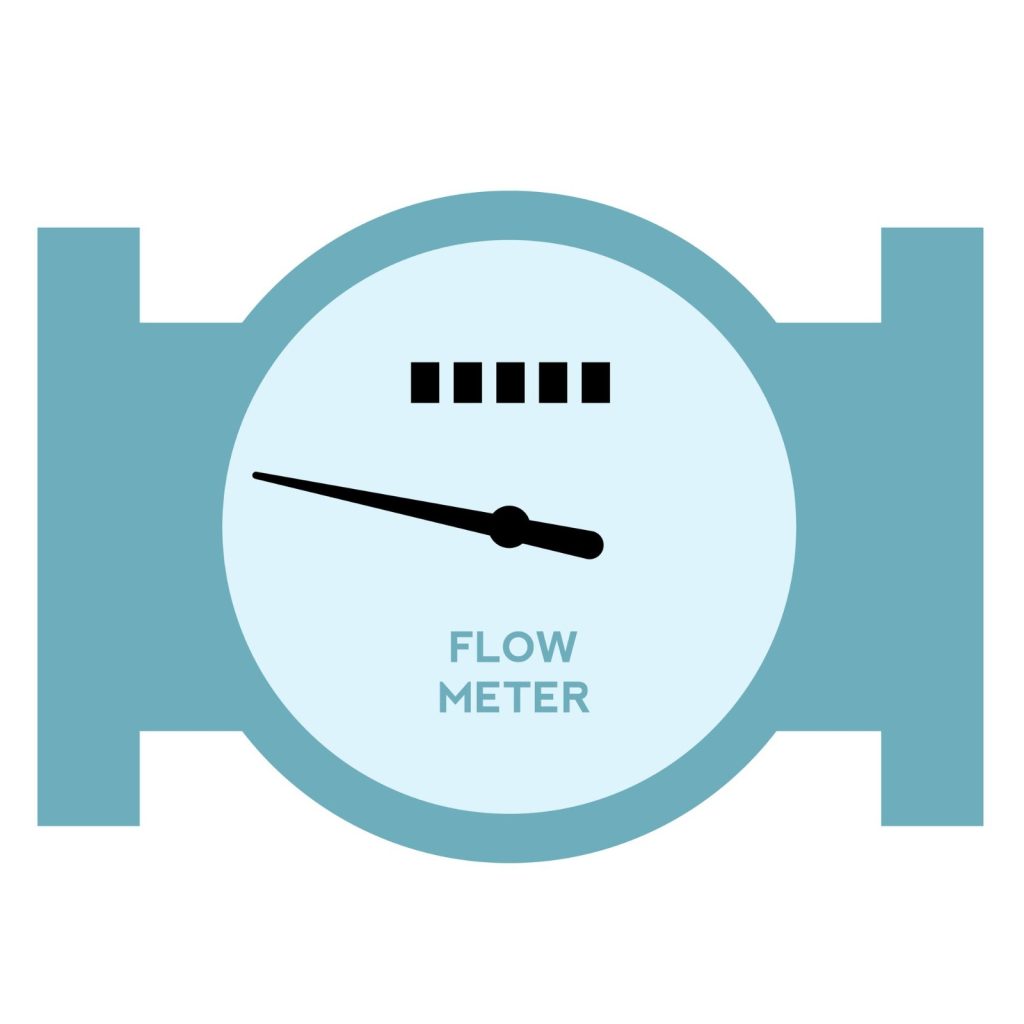Although many have undertaken the task to define what a flow meter is, there is always room for alternative explanations. Before understanding the basic principles of flowmeter types and how they work, it might be useful to take some time to first look at the root words. We have two words “Flow” and “Meter”
A Clearer Flow Meter Definition
Root definitions of these words can provide clues to help us form a better understanding of what we are actually describing. The word flow is similar to the old English word “Flọ̄d” which sounds like a flood and the word “meter” derives its meaning from “measure” – so we are actually talking about a measurement of events. Normally a flow device pertains to fluids. These fluids can be in different states, either liquid, gas or steam.
There are many types of flowmeters evidenced by the numerous flow meter symbols that engineers use in PID Diagrams. The image below shows 19 flowmeter symbols, each representing a flow meter type.

To flow or not to flow. What about flow indication?
Some people imagine that flow indicators are flowmeters. In a sense they are not giving any precise measurements and can be considered a type of flow device
Although “No flow” is not an event, it can still be considered a state of fluid that needs to be observed. One state is “no-flow,” while another state is “Flow”. Products that enable users to simply see if there is a flow are called Flow Indicators. An example of a Flow Indicator can be seen in the liquid type, where a propeller-type object spins inside a pipe, while for gas, a ball rises up or down depending on the “flow” or “no-flow” state.

Liquid Spinner Type (Liquids)

Rising Ball (Gas or Air)
What is the difference then between a flow indicator and a flow meter?
The difference between them lies in the fact that the flow meter is actually quantifying the amount of flow, while the indicator is simply identifying it’s presence. In the above examples, the flow state is being identified visually. This example is now functioning as a flow meter because it has a dial which is pointing to a specific flow velocity or flow rate.

Weights and Measures

Coriolis Meters are important where Mass Flow Measurement is needed.
The reason for bringing up the topic of weights and measures is because it becomes important for product manufacturers dealing with fluids that can change in density to be aware of the mass (literally the weight) of the fluid.
Since the density and pressure of some fluids will change in a process, it is more useful to know the “amount” of a substance flowing, not just by volume but also the weight. Food and chemical manufacturers who want to control their product quality will often use a Coriolis Flow Meter that also measures the density of the fluid. This is probably the main reason why mass flow meters have become so popular in food and chemical production.
Simple Volumetric Flow Measurement for most applications
If we are simply measuring water or water-based substances, we do not have to consider any change in mass because a change in temperature or pressure in water does not really change it’s density. In these cases, a volumetric flow meter or measurement is adequate.
There are several types of volumetric flowmeters available on the market, some using direct mechanical principles for the measurement e.g Oval gear flow meter for diesel – while others infer the volumetric flow rate by calculations e.g electromagnetic , turbine or ultrasonic. The following video is an example of a simple (yet trusted) type of Water Meter called a Woltmann Meter. This meter is a common sight and although other technologies have been introduced into this market; this standard type of Water Meter still remains popular – probably because it is easy to install and also because electricity is not normally required for it to operate.
Another flow meter technology that is extremely popular for measuring water and wastewater is the Magnetic Flow Meter. Here is some more information on how Magnetic Flow Meters work and why they are still popular. (https://flowmeters.ph/electromagnetic-flowmeters-and-their-popularity/)
This website showcases different types of flowmeters because there is no universal type of meter on the market that can adequately satisfy all flow scenarios. Flow Meter selection is often application dependent i.e. the meter must be chosen according to it’s ability to work well in a particular application. One of our specialties is the supply and implementation of clamp on ultrasonic flow meters. This is because it is not necessary to stop a process or cut open a pipe to install these meters. Here is a video demonstration where a high-quality ultrasonic flow meter is being compared to an ILAC-certified Magmeter.
This information is an introduction to flowmeters and flow measurement. We must take into consideration that the topic of flow measurement is extensive and large volumes of books have been written on the topic. It is not uncommon to find that a person with experience in one type of flow meter may not be aware that other technologies and solutions are being used for the same applications. Each country and group will have it’s favorite meter and the reason for choosing a particular technology could be owing to several factors which might include personal experiences, technological reasons, economical constraints and even historical reasons e.g the user has always used a particular meter and does not feel a need to change to another meter. For more information contact flowmeters.ph










